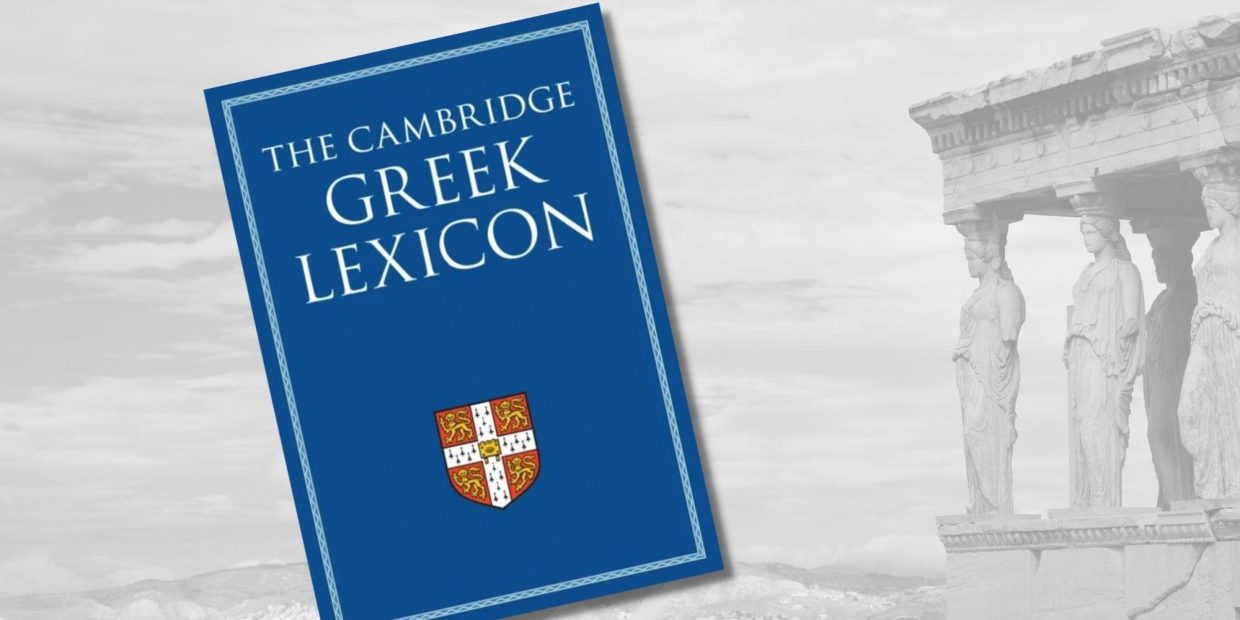Reviewing a new Greek Lexicon
Lexica are the workhorses of Classical Studies. They’re the tomes that come most easily to mind when we joke that we spend our days ‘looking things up’. And so, the launch of a new lexicon for Ancient Greek is an event to be noticed.
Published earlier this year after more than two decades’ work, The Cambridge Greek Lexicon seeks to supplant the ‘Middle Liddell’, the standard student resource compiled in the high Victorian period. And it appears scarcely a half-dozen years after Brill’s Dictionary of Ancient Greek, itself a translation of Montanari’s Vocabolario della Lingua Greca.

How indeed does one review such a work? It is, for a start, over 1500 pages of dense text. It will be consulted by a great variety of students and scholars for myriad different purposes. And its influence, should it be widely adopted in the field, will be inestimable. The Victorian worldview of Liddell & Scott’s lexicographers has scaffolded how Greek texts are understood for generations – whether noticed or not – and will continue to for years to come via Logeion and the Greek Morphology Tool. So too, the choices made by Diggle et al. will likely weave their way through our translations and colour our understanding of antiquity. As editors of a journal dedicated to reviews of books in Classical Studies, we decided we did not necessarily want a lexicographer’s assessment of this new resource. Rather, we wanted to know what the new Lexicon was like to use; and we knew that just one user’s perspective would not be enough.
And so, in a rare move for Classical Review, we have a pair of responses to the same publication. Elizabeth Minchin offers us an overview of the new resource, praising its visual clarity, its freshness of purpose, its direct and judicious use of the English idiom; ‘It is a brilliant resource for all Classicists – and a landmark in ancient world studies’, she concludes.
Rebecca Futo Kennedy and Max L. Goldman delve into the Lexicon with a more pointed aim, to examine its treatment of language relating to women, race and ethnicity, three areas where ‘there is a risk of reproducing nineteenth-century racist and misogynist attitudes through anachronistic translation’. Here we enter the lexicographical labyrinth: how to effectively convey meaning in a world without the same cultural structures, or values? Kenney and Goldman find the new Lexicon offers much improved and more sensitive definitions of words describing different groups of women; in its treatment of race and ethnicity, however, they argue that it still betrays positivistic, biological assumptions out-of-step with much current scholarship.
In a perfect illustration of how lexicography stands always on the shoulders of past generations, we hear in this volume also from the Cambridge Lexicon’s Editor-in-Chief James Diggle. He reviews Stray, Clarke and Katz’ edited collection Liddell and Scott: The History, Methodology, and Languages of the World’s Leading Lexicon of Ancient Greek (OUP, 2019). In his review Diggle takes us through the volume’s chapters which in turn shed light on past practices, and offer advice and models for future lexica to come.
Both reviews are free to access until the end of February 2022.









